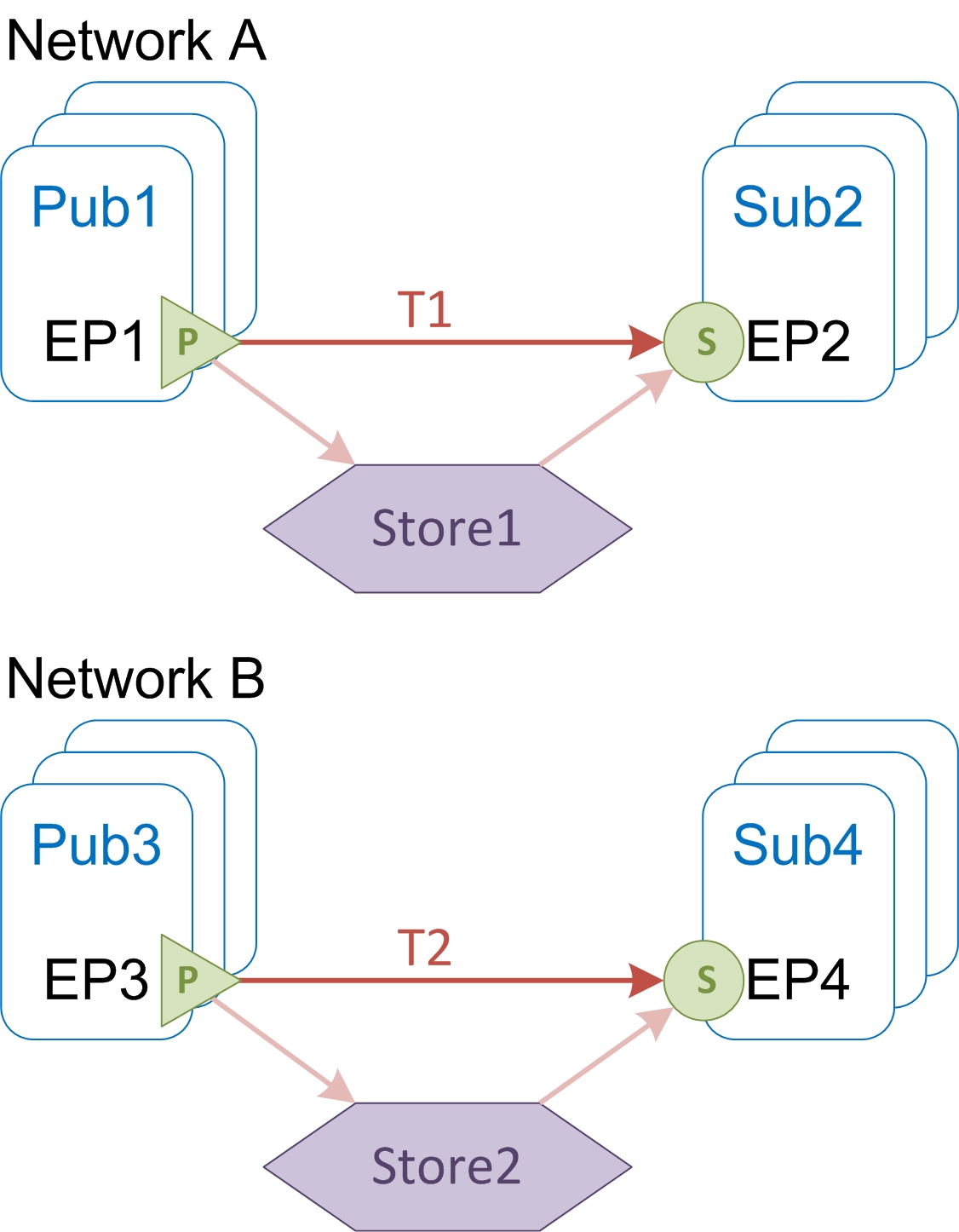Two Stores
This second example of persistence illustrates the need for two stores. The following diagram depicts two separate networks of endpoints:
- Network A (which is familiar from the previous example) consists of endpoints EP1 and EP2, connected by direct-path transport T1.
- Network B consists of endpoints EP3 and EP4, connected by direct-path transport T2.
Notice these features of the example in the preceding diagram:
- Each network carries a separate message stream: the message stream of network A is separate and disjoint from the message stream of network B.
- Store1 backs network A, while Store2 backs network B. Each store backs only one network. Each network includes only one store.
- Each store collects only the message stream of the network that it backs. For example, messages from network B do not enter Store1, because we deliberately kept network A separate from network B.
Copyright © Cloud Software Group, Inc. All rights reserved.

